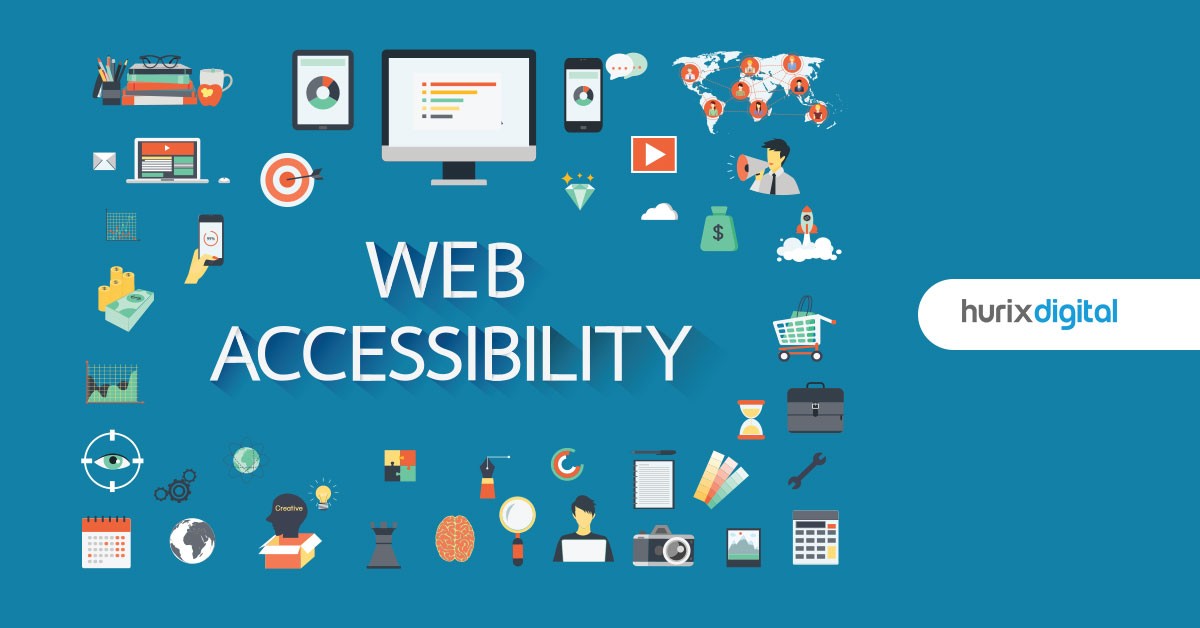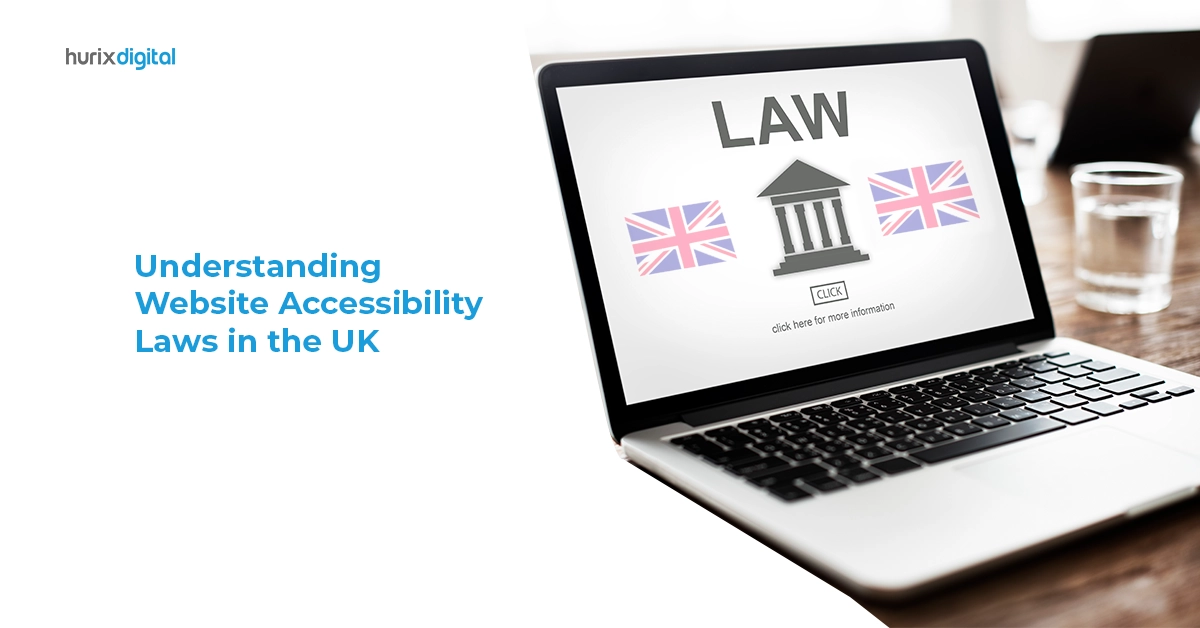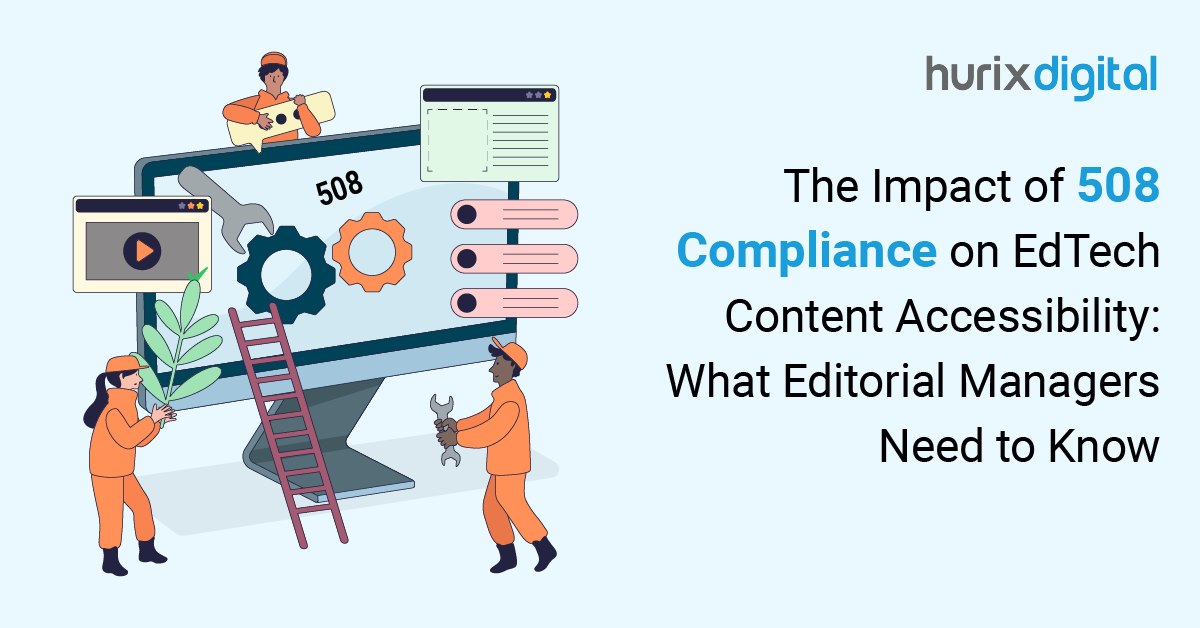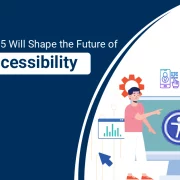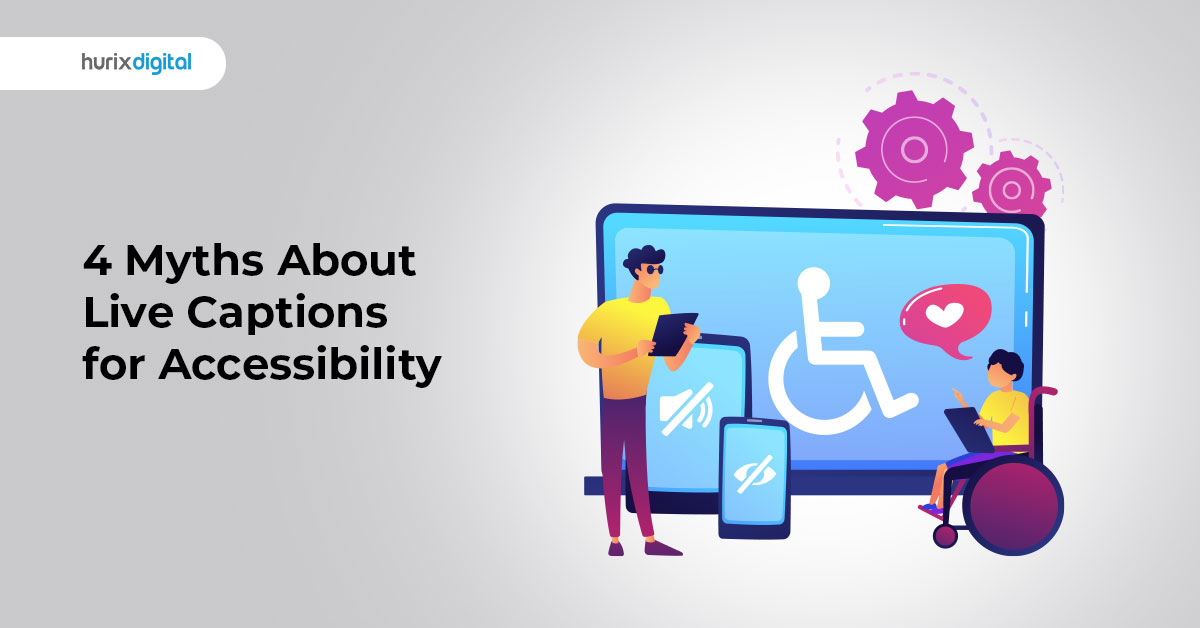
4 Myths About Live Captions for Accessibility
Summary
Debunk common myths about live captions and their role in accessibility, including their benefits, limitations, and importance in inclusive communication.
Due to rapid technological advancement and digital evolution, digital accessibility has rightly taken center stage in every facet of our life. Numerous web accessibility standards can be identified in everyday interaction with digital apparatuses.
Text-to-speech commands, keyboard navigation, adaptable PDFs, voice commands, screen readers, etc., are all examples of accessibility tools.
Live captioning and subtitles are other important aspects of digital accessibility. WCAG 2.1 accessibility standards require live captioning for all audio and video content under Success Criterion (SC) 1.2.4 “Captions (Live)” Level AA.
There is now a conscious effort in the digital realm to provide live captions to ensure inclusivity and equality for differently-abled individuals. Despite the growing recognition of captioning services, some myths interfere with their adoption.
In this comprehensively curated article, we strive to debunk the myths associated with live captions for accessibility. However, before we begin to discuss the myths, let us first begin with some basics.
Table of Contents:
- What are Live Captions?
- Myths About Live Captions for Accessibility
- Tips for Implementing Live Captions
- Wrapping Up
What are Live Captions?
Live caption, referred to as subtitles, is the text representation of audio and video content. People who are hard of hearing benefit greatly from live captions as it allows them to follow along with the content easily.
Users in noisy environments or who cannot increase the volume due to unavoidable circumstances also use live captions to engage with the content effectively.
For the live captions to work efficiently, there should be proper synchronization between the caption transcript and the spoken words. The mismatched pace of the caption and the visual/audio content ruin the viewing experience and confuse the audience.
Apart from people with cognitive disabilities and individuals in noisy surroundings, non-native speakers of a language also rely on live captions to comprehend the content. These live caption features contribute significantly to promising inclusivity to everyone regardless of external factors.
Also Read: Why Accessibility Training Matters: The A11Y Collective and the European Accessibility Act
Myths About Live Captions For Accessibility
It is safe to say that live captions greatly enhance web accessibility and video accessibility. Consequently, it becomes very important to resolve the misconceptions and myths surrounding live captions for the benefit of all.
Mentioned here are 4 myths about live captions which need to be clarified:
Myth 1 – AI-Generated Live Captions are Accurate and Reliable
The narrative regarding striking the right balance between humans and artificial intelligence in the digital realm becomes very important to understand this major myth surrounding live captions. Although artificial intelligence has greatly improved in recent years, it cannot be relied upon fully for generating accurate and reliable live captions.
Numerous accuracy challenges hinder the dependability of AI-generated captions. Technical limitations like lack of contextual understanding and accuracy challenges like accents, pronunciation, overlapping dialogue, homophones, etc., all lead to inaccurate captions.
For instance, artificial intelligence cannot understand complex local vocabulary and specific jargon as well as a human. Without relevant linguistic expertise and an in-depth understanding of regional nuances, the intended message can be lost in translation.
Other environmental factors like background noise and poor audio quality can lead to incorrect transcription.
Myth 2 – Only Viewers with Hearing Abilities Require Live Captions
Although WCAG mandated live captioning and subtitles under Success Criterion (SC) 1.2.4 for people with hearing deficiency and other cognitive disabilities, this does not mean it cannot be beneficial for other viewers as well.
Live captions can benefit a wider audience, like non-native speakers, audiences in noisy environments, visual learners, multi-tasking viewers, etc.
Consequently, live captions go a long way in enhancing the overall viewing experience. It promises enhanced inclusivity to each viewer, ultimately fostering a more interactive digital landscape.
Myth 3 – Incorporating Live Captions is an Expensive Venture
A decade ago, it might have been true that incorporating live captions was an expensive venture. However, now with increased awareness and advancement in technological tools, there are numerous cost-effective captioning services available in the market.
Additionally, incorporating live captions can prove a lucrative investment as it enhances content accessibility and engagement. A study performed by Meta revealed that live captions enhanced video engagement by 12%.
The return on investment with quality live captions is very high and can provide you with a competitive advantage in the diverse and crowded marketplace.
Some options you can explore for generating live captions are third-party services, in-house live captioning teams, pay-as-you-go models, AI assistive technology, online budget-friendly tools, and much more.
Myth 4 – Anyone Can Easily Implement Live Captioning
Sometimes organizations fall under the impression that generating live captions and following other accessibility trends is an easy task and can be undertaken by anyone.
Although numerous technological and assistive tools are available in the market, live captions accessibility professionals possess skills not everyone has. Trained professionals have expert-level proficiency, which helps produce accurate and effective captions.
Here are some skills of experts which can ensure the fulfillment of WCAG accessibility guidelines for live captions:
- Language and grammar proficiency
- Relevant contextual understanding
- Correct speaker identification
- Understanding complex vocabulary
- Timing and synchronization
- Quality control and editing
- Knowledge of the latest WCAG 2.0 accessibility standards
- Presenting non-speech sounds
- Audience considerations
You might also like: Hurix Digital Develops 7000 Minutes of Audio Recording with Closed Captions
Tips for Implementing Live Captions
Now that you know about the myths associated with live captions for ensuring accessibility for websites and audio/video content, you can effectively begin to engage in captioning services.
This will go a long way in increasing audience engagement and interaction. Here are some tips you can keep in mind while implementing live captioning:
- Select the right captioning agency and solution
- Establish a robust speaker identification system
- Allows users to access a live captioning link
- Carefully consider audio quality to create accurate captions
- Choose the right font and size for captions
- Edit and review before publishing
- Collect feedback and adjust accordingly
Wrapping Up
We believe now you know everything about the role of live captions in bridging the communication gap between the content and the audience. To empower people with hearing loss or other cognitive disabilities, live captions can ensure a highly inclusive and equal digital experience.
If you are also looking to implement unique accessibility solutions and need a 4 Myths About Live Captions for Accessibility, you can reach out to us Hurix Digital. We can handle all your live captioning needs and other accessibility requirements. Some of our trusted clients globally are Ikea, Cambridge University Press, Deloitte, etc. You can be our next customer.
Reach out to our expert team now and get started. Hope to see you soon!

Vice President – Digital Content Transformation. He is PMP, CSM, and CPACC certified and has 20+ years of experience in Project Management, Delivery Management, and managing the Offshore Development Centre (ODC).

